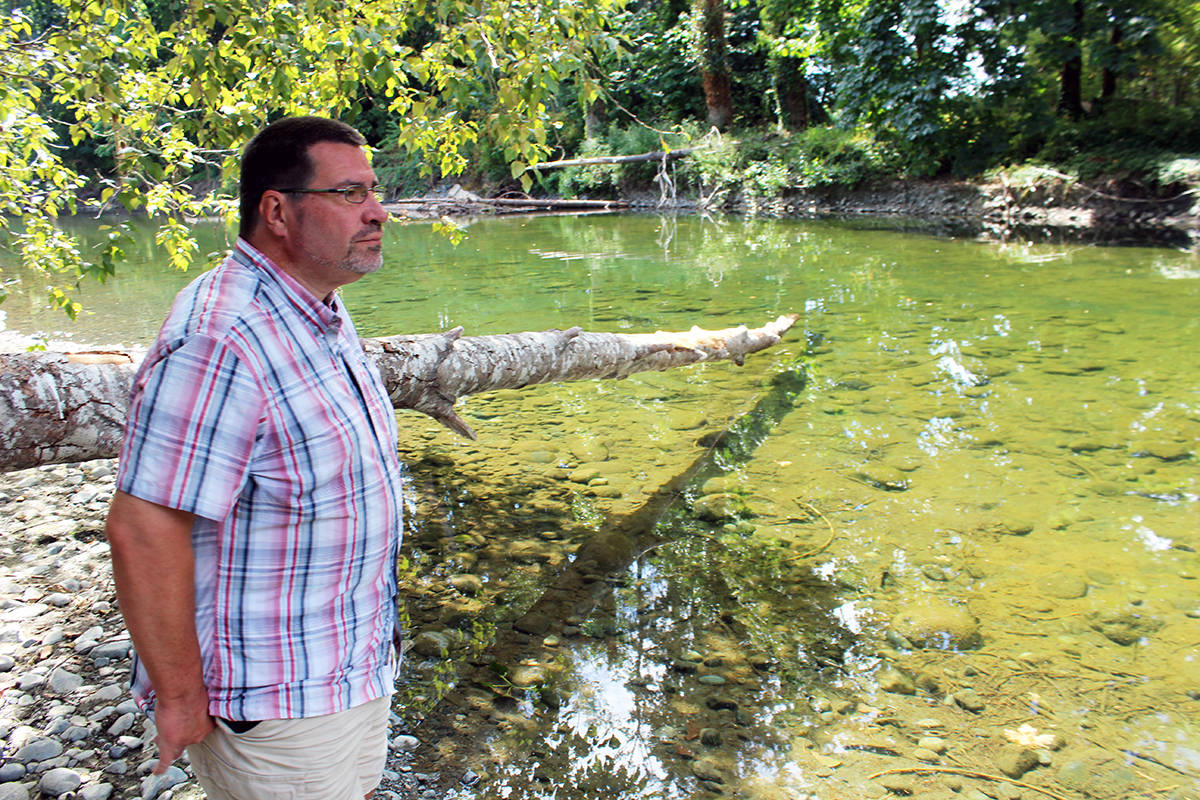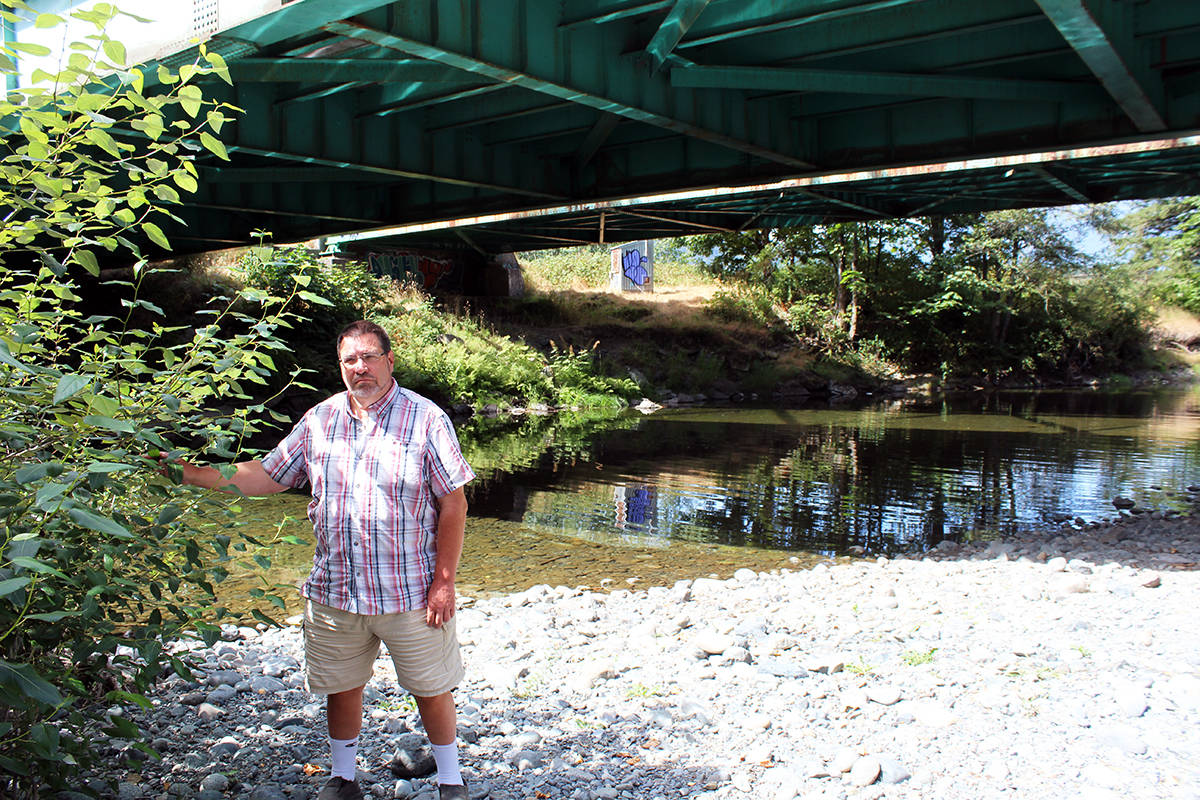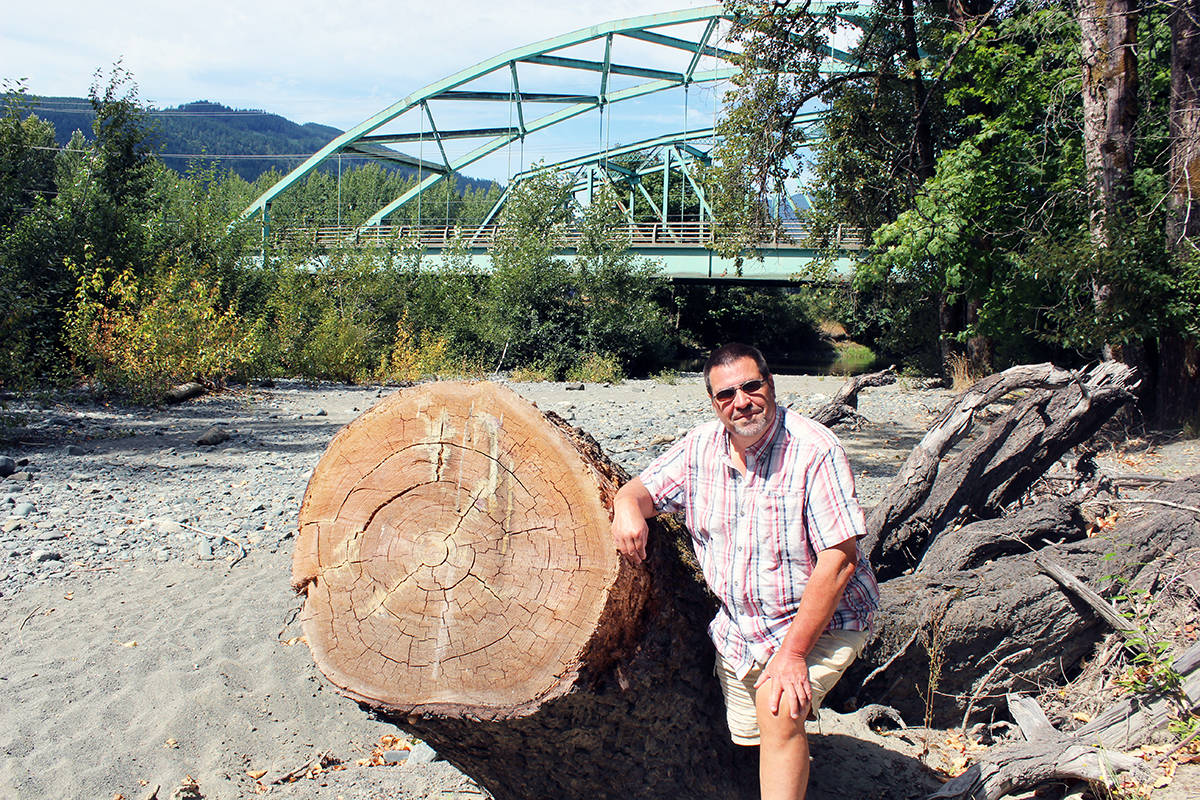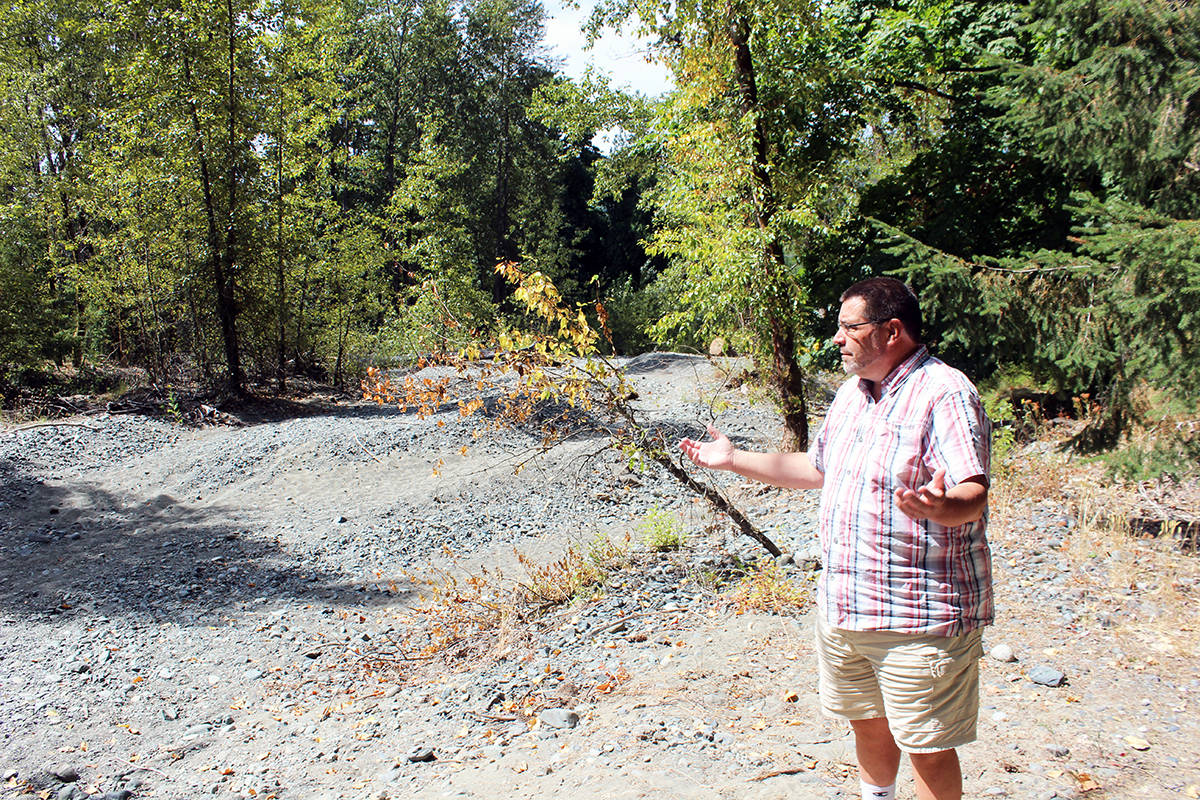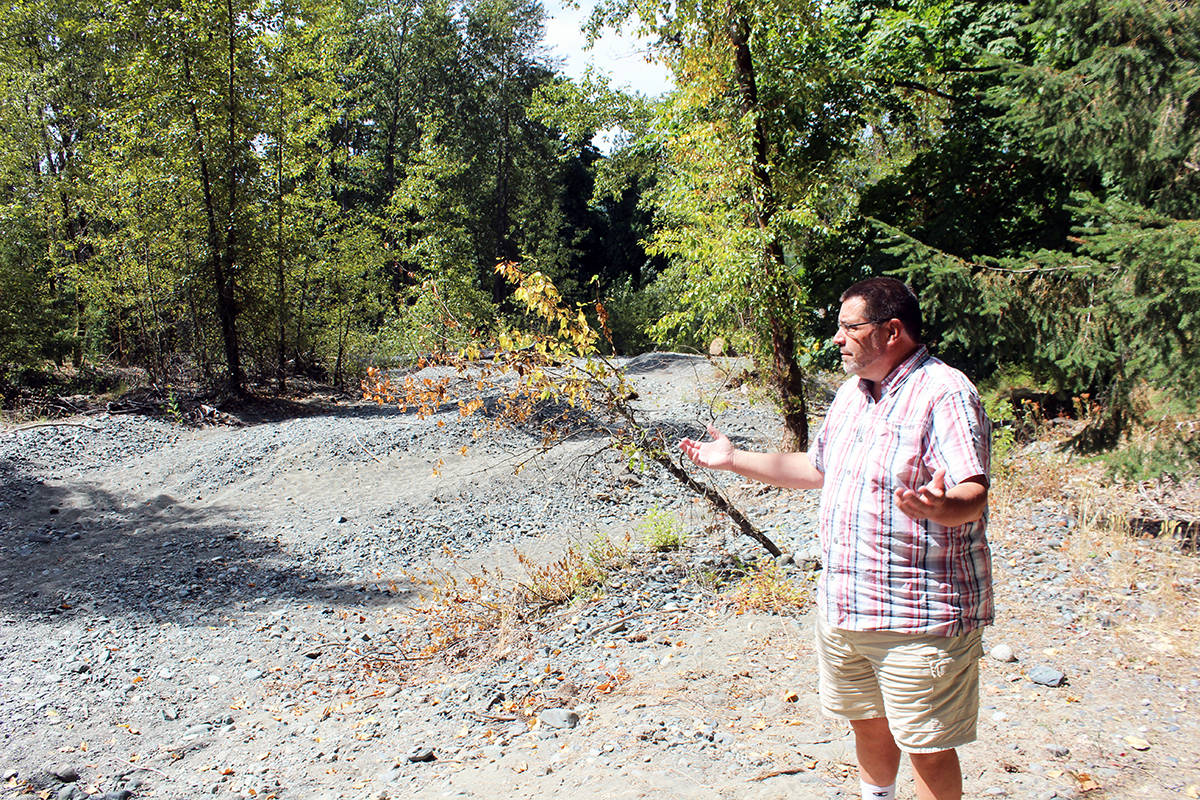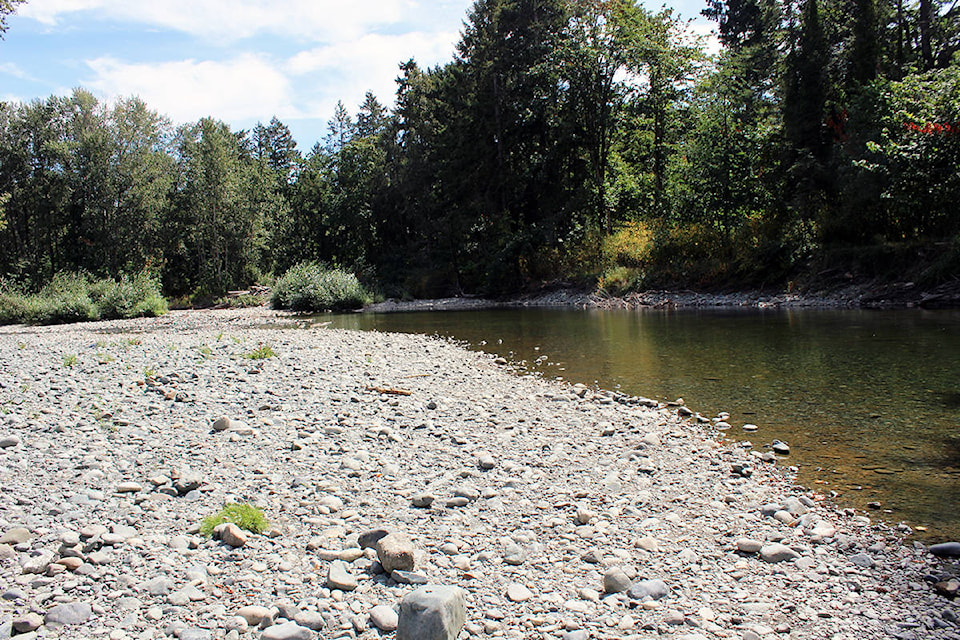The increasingly dire situation on the Chemainus River is also being seen on the neighbouring Koksilah and Cowichan Rivers and most other rivers on Vancouver Island, for that matter.
Related story: Chemainus River watershed on the list of concerns for water scarcity and drought
While most are quick to attribute water scarcity solely to drought from climate change, Erik Piikkila of Ladysmith takes it a step farther from his experience to cite several other factors.
Piikkila comes from a forestry family and wanted to be a tree faller. Among his experiences in the industry, he went to BCIT and learned about forestry inside and out; has done most of the jobs in the woods; worked for the BC Forest Service as a forest technician for several years; managed and advised 10 major forest companies with 30 different operations, B.C. Timber sales and woodlots with cutblock level retention of wildlife tree patches and riparian reserves under the now defunct BC Forest Practices Code; and completed a Bachelor of Forestry in Finland with time at the University of Washington.
He’s also a B.C. forester in training. His academic training at the University of Washington included: forest, old growth, watershed and landscape ecology along with wildfire and fire ecology.
His academic training in all of the ‘ologies’ also included taking this ecological science and applying it on the ground as Ecosystem Based Management and Ecological Forest Management, as was the case with the BC Forest Practices Code.
He refers to five prongs that must be properly addressed for the betterment of the environment and the ecosystems that contribute to such things as water flow on rivers. These include: ecosystem based management forestry, forest thinning (with multiple objectives), restoring fire in forests, restoring damaged ecosystems, and local governance of forest resources with regional districts and local governments engaging with small private landowners who have ecosystems such as the Coastal Douglas fir ecosystem.
“We have to look after all these factors and act on them immediately,” Piikkila said. “I don’t think we can keep logging old growth anymore. We need to change how our forests are managed and we need to start thinning these forests in a coordinated and massive way across the province.”
Through forest thinning, timber supply will still be created, he added, keeping important forestry jobs going. In fact, loggers with more than 100 years of accumulated logging knowledge will be key in implementing an Ecosystem Based Management system which is more difficult and expensive to operate.
With climate change now becoming more widely accepted based on what’s been happening lately, a much closer look is being taken at all factors in combination.
“We’re getting more rain in the wintertime and hotter, drier summers,” said Piikkila. “There’s no old growth in the hills and we never let trees and forests get old enough.
“It’s the trees up on the hillsides. The tree itself is like a vertical river, you’ve got moss, lichen and tree needles in the forest canopy. Old growth forest slows water down. Old growth Douglas-fir trees with 60 million needles slows down water, and rain and snow and allows the precipitation to drip slowly to the ground. On the ground, thick moss mats and logs on the ground act like dams, and once water reaches creeks and streams logs that have fallen in from riparian forests also dam water. All of these natural forest structures and species slow water down.”
The bottom line is forests keep water on the hillsides longer and stop water rushing down in a torrent, like when Russell Farm Market flooded in January of 2019.
Related story: Logjams and gravel bars the bane of Chemainus River’s existence
“We need to stop clear-cutting,” Piikkila added. “We need to go to a selective logging system where we select more trees and patches of trees and logs to be retained during logging operations and left as biological legacies in the next and future forest. You need to have intact forest cover which shades and cools the soil, allowing moisture to stay in the soil, and creating the shady, cool and moist conditions moss, lichen and fungi require.
“Having moisture available in the ecosystem well into summer could counteract summer droughts like those we have experienced in the past decade and will experience as summer droughts intensify under climate change over the next century. Wetter soils may equal survival for trees like red cedar, grand fir and alder that are dying out from lack of summer moisture. Forests and, in particular old growth forests, capture moisture and release it slowly throughout the year, making sure there’s a water supply and good cold water for salmon.”
Clearcutting by removing the forest canopies in their entirety and cutting all live and dead trees and taking away 95 per cent of the logs, changes forest hydrology in major ways, Piikkila said. “The Ministry’s own studies are telling them that clearcutting impacts and disrupts forest hydrology in major ways.”
Piikkila elaborated he’s also concerned about vast areas of second growth forests that are young to middle age, between 60 and 250 years old, that no one talks about.
“If these forests were to have large old live and dead trees and large downed logs as biological legacies, they are structurally more complex and further along in old growth development. Given time, these forests which are on the cusp of oldgrowthedness, could become old growth and another important tool in fighting climate change and ensuring forests have and provide year round water supplies, allowing watersheds to fully function.
The importance of older forest structures is demonstrated by “rainfall washing over large, decaying downed 100-year-old and older logs covered by moss and lichen, inputs 49 pounds/acre/year of nitrogen into the soil. By harvesting old growth and middle age second growth forests, we are converting all of our older forests into young forests (0-60 years old) which is like a stock market crash where our older and long term forest portfolio is drastically reduced in size and amount.”
Types of restoration include: planting riparian trees and plants such as broadleaf trees like alder, maple and cottonwood which provide leaf fall into streams that are eaten by small aquatic species and then become food for salmon, and placing logs in streams to create salmon habitat, restoring wetlands or building new wetlands, especially in urban areas. “Instead of hard infrastructure assets like storm drains and levees and pumping stations like in Duncan, bring back fire onto the landscape, bring back beavers to dam waters which provides a steady supply of water in periods of low water in late summer and early fall, and removing dams like Elwha Dam in Washington State which allows natural flows of water, natural flooding and deposition of silts and gravels creating salmon spawning habitat,” Piikkila noted.
People might wonder about the implications of restoring fire as one of the factors. New research out of California on Aug. 6 reinforced the relation between fire, water and biodiversity, Piikkila said.
“They found that letting some prescribed fires burn more freely increased soil moisture, a 30 per cent increase in summer soil moisture, drought induced tree mortality decreased and increased biodiversity (pyrodiversity). When charred by fire, logs not completely burned and wetted by winter rains become super nutrient and water sponges.”
Fires are also important in seasonally dry forests, where fires reduce small-tree density, spur growth in large, long-lived trees that store more carbon. It turns out three per cent of the trees, the largest, in a forest store 42 per cent of the carbon.
Local governance, Piikkila added, is crucial as centralization of power and decision-making brings with it little if any ties and knowledge of local lands and ecosystems, even from people who used to work in the woods. “Really understanding and knowing the forests has been crucial at any time but perhaps this local knowledge and experience is going to be required even more in the 21st Century,” he indicated.
While at the University of Washington, Piikkila’s forest ecology professor was the legendary Dr. Jerry Franklin, whose middle name just happens to be Forest. He’s now 84 and has done considerable research on old growth in the U.S. Pacific Northwest for more than 50 years.
There is a lot to learn from Franklin’s expertise, according to Piikkila.
“We seem to have lost this knowledge in B.C. even though similar and contributory research was done in B.C. by the vastly scaled back Forest Sciences Research program that was decimated by the BC Liberals and not restored by the BC NDP,” he indicated.
Franklin’s old growth knowledge has been the basis for the 1995 Clayoquot Sound Scientific Panel Reports as well as the BC Forest Practices Code 1994-2004 and through these involvements his research also became the basis of the Great Bear Rainforest Agreement.
Piikkila is a bit of a knowledge keeper of this US Pacific Northwest Research and its application here in B.C. and in Sweden and Finland. He’s also one of just two students of Franklin’s in B.C. and Canada, with the other being a PhD.
“We’re going to need to learn to look after ecosystems and change in a positive way how we treat our forests in B.C. in places like Fairy Creek, the Six Mountains, Cable Bay, Peachland, Boundary Forests near Grand Forks or any forest you would care to mention in B.C., Canada or around the world,” summed up Piikkila.
“Natural ecosystems like forests and the ecological goods and services that they produce for free such as clean air and water and store carbon, are going to be one of our cheapest options in fighting climate change. We just have to let and help them, to help provide for and protect us.”
(The ecosystem and management solutions this story presents are based on 50 years of ecological science from old growth forests and a volcanic blast but new efforts and research are focused on interlock and combining 10,000 years of First Nations Traditional Ecological Knowledge with Western ecological science and using the best of both worlds to meet the ecological, social, spiritual, cultural, and even economic challenges of the 21st Century).
